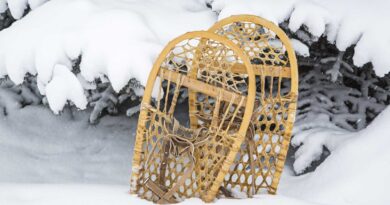Why Naturalizing Your Shoreline is Vital to the Health of Your Lake!
Many Canadians put a lot of effort into creating their lush, green lawns. It’s often a labour of love that involves multiple steps – the mowing, raking, weeding, fertilizer and pesticide applications. We take pride in our grassy spaces, but did you know manicured lawns on shoreline properties can impact the health of our lakes? Up to 35 per cent of precipitation can run off lawns and enter lakes – carrying with it sediments, pesticides, fertilizers and other harmful pollutants from our properties.
“Your shoreline was meant to be naturally beautiful,” said Terri-Lee Reid, Freshwater Researcher with the Canadian Wildlife Federation (CWF) who helps oversee the Love Your Lake program. “Naturalized shorelines are cost-effective, low maintenance, ecologically responsible and stunning. They also add value to your property and help support healthy habitat along the shore and in the water.”
What does a natural shoreline look like? According to Reid, it should contain native vegetation, known as a buffer, which extends back at least 30 metres from the shoreline. While a buffer strip of this size is not always possible, any size buffer is better than none at all. These buffers have many important benefits.
“For starters, shoreline buffers help to maintain and even increase property values,” she said. “The natural vegetation allows for filtration, which helps remove many nutrients, sediments, and other dangerous contaminants before they enter the lake and harm aquatic life and water quality.”
In comparison to the short root systems of lawns, the vast network of roots under a natural shoreline holds soil in place and helps prevent shorelines from slumping and washing away. A buffer can reduce flooding by slowing the velocity of surface runoff so it has time to absorb into the ground water rather than flow directly into the lake. A natural buffer helps create wildlife habitat for reptiles, amphibians, fish, birds, insects and mammals that use the shoreline for mating, rearing young, for food, shelter, and protection from predators. Plus, natural vegetation is beautiful! You can easily create an attractive oasis that will provide privacy and beautiful views to enjoy. Reid says that there are multiple ways to naturalize your shoreline and create beautiful buffers designed to help wildlife.
“A natural shoreline can also have stones, boulders, snags, and branches found along the shoreline,” said Reid. “Not only do these features provide important wildlife habitat, but they also help reduce erosion.”
Reid suggests that if you have a retaining wall, consider planting native vegetation on the landward side. This will help provide all the important benefits outlined above, protecting your lake for you and your loved ones.
Love Your Lake is a shoreline naturalization program developed by CWF and Watersheds Canada. For more information on ways that you can love your lake, be sure to visit LoveYourLake.ca!




